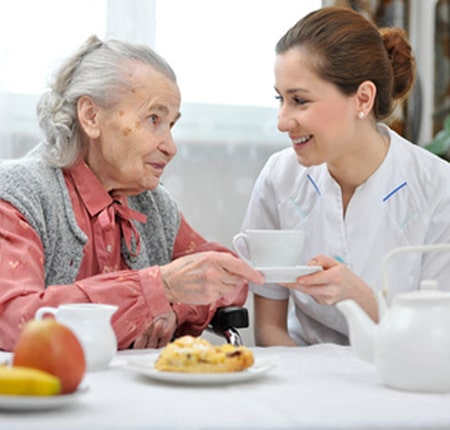Leukemia, a type of blood cancer, originates in the bone marrow and affects the production of blood cells. It is a complex and potentially life-threatening condition that requires a comprehensive understanding of its types, causes, and available treatment options.
Understanding Leukemia: Types, causes, and treatment options
Leukemia is a complex disease characterized by the abnormal growth of white blood cells in the body.
For elderly individuals considering care home options, understanding the different types, causes, and treatment options for leukemia is crucial. Let's explore:
Types of Leukemia:
Find YOUR ideal care home NOW!
-
Acute Lymphoblastic Leukemia (ALL): This rapidly progressing form of leukemia primarily affects lymphoid cells. Although more common in children, adults can also be diagnosed with ALL.
-
Chronic Lymphocytic Leukemia (CLL): CLL progresses slowly and primarily affects mature lymphocytes. It is commonly diagnosed in older adults and may not require immediate treatment.
-
Acute Myeloid Leukemia (AML): AML is a fast-growing leukemia affecting myeloid cells. It can occur in both children and adults and requires prompt treatment.
-
Chronic Myeloid Leukemia (CML): Characterized by the presence of the Philadelphia chromosome, CML progresses more slowly than AML. Treatment options often include targeted therapies.
Causes of Leukemia:
-
Genetic factors: Certain genetic abnormalities or mutations can increase the risk of leukemia, especially for individuals with a family history of the disease.
-
Environmental exposures: Exposure to high levels of radiation or certain chemicals like benzene has been linked to an increased risk of leukemia.
-
Medical treatments: Previous exposure to cancer treatments like radiation therapy or chemotherapy can elevate the risk of leukemia later in life.
-
Immune system disorders: Individuals with immune system disorders, such as Down syndrome, may have an increased susceptibility to leukemia.
Treatment Options:
-
Chemotherapy: Using drugs to kill or control abnormal cells, chemotherapy is a common treatment for leukemia, administered orally or intravenously.
-
Targeted therapy: Targeted therapies focus on specific molecules involved in the growth of leukemia cells, minimizing damage to normal cells.
-
Stem cell transplant: Also known as a bone marrow transplant, this procedure replaces diseased bone marrow with healthy stem cells, often considered for aggressive forms of leukemia.
-
Immunotherapy: Harnessing the body's immune system to target and eliminate cancer cells, immunotherapy has shown promise in treating certain types of leukemia.
Understanding the types, causes, and treatment options for leukemia is essential for elderly individuals and their families. Early detection, personalized treatment plans, and ongoing medical advancements contribute to better outcomes and improved quality of life for those facing this challenging condition.
Treatment Options for Leukemia & Their Benefits
| Treatment | How It Works | Best for Which Type? | Key Benefits |
|---|---|---|---|
| Chemotherapy | Uses drugs to kill or control cancer cells. | ALL, AML, CLL | Effective for aggressive forms of leukemia. |
| Targeted Therapy | Attacks specific leukemia-related proteins or genes. | CML, CLL | Minimizes damage to healthy cells, fewer side effects. |
| Stem Cell Transplant | Replaces diseased bone marrow with healthy stem cells. | ALL, AML | Potentially curative for aggressive leukemia cases. |
| Immunotherapy | Boosts the immune system to target cancer cells. | ALL, CLL | Can be an option when chemotherapy is ineffective. |
FAQ: Leukemia in Seniors
-
What is leukemia?
Leukemia is a type of cancer affecting white blood cells, leading to abnormal blood cell production in the bone marrow. -
What are the early signs of leukemia in seniors?
Symptoms may include fatigue, frequent infections, bruising easily, weight loss, and swollen lymph nodes. -
How is leukemia diagnosed?
Blood tests, bone marrow biopsies, and genetic tests help confirm the presence and type of leukemia. -
Can leukemia be cured?
Some forms of leukemia can go into long-term remission with treatment, while others require ongoing management. -
Is leukemia more common in the elderly?
Yes, CLL, AML, and CML are more common in older adults, often requiring specialized treatment approaches. -
What is the best treatment for leukemia in seniors?
The best treatment depends on the type and progression of leukemia, but targeted therapy and chemotherapy are common options. -
What are the side effects of leukemia treatments?
Side effects can include fatigue, nausea, weakened immunity, and hair loss, but modern treatments aim to minimize these effects. -
Can leukemia develop due to lifestyle factors?
While genetic mutations play a major role, radiation exposure, smoking, and certain chemicals can increase leukemia risk. -
What is the life expectancy for seniors with leukemia?
Prognosis depends on leukemia type, early detection, and treatment response. CLL may have a slow progression, while AML is more aggressive. -
How can care homes support seniors with leukemia?
Care homes provide specialized medical care, medication management, and symptom relief, ensuring a comfortable and well-monitored environment.
We are here to help you choose a care home or facility best suited to your needs. Do not hesitate to contact us on the following number: 0230 608 0055 or fill out this form.


